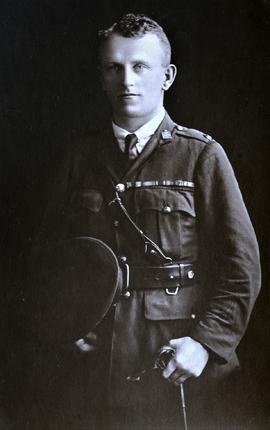Murphy, Bonaventure, 1880-1968, Capuchin priest
- IE CA DB/46
- Personne
- 7 February 1880-26 April 1968
A native of Cork, Fr. Bonaventure Murphy OFM Cap. had a long association with the Capuchin College in Rochestown in the county and served as rector of the school for twenty-one years. While rector, he gave refuge to Captain Robert Monteith (1879-1956) who had accompanied Roger Casement to Ireland in a failed attempt to deliver German arms to be used by republican insurgents in the 1916 Rising. Monteith remained at Rochestown until arrangements could be made for his escape to the United States. Fr. Bonaventure was acquainted with many prominent republicans including Terence MacSwiney and Michael Collins and he reportedly sheltered Liam Mellows during the War of Independence. In 1934 he was appointed guardian (local superior) of the Capuchin Friary in Kilkenny, a position he held until 1940. He continued to reside in Kilkenny until his death.
Baptismal name: Martin Murphy
Name (in religion): Fr. Bonaventure Murphy OFM Cap.
Date of birth: 7 Feb. 1880
Place of birth: Glanmire, County Cork
Name of father: Michael Murphy
Name of mother: Mary Murphy (née Hegarty)
Date of reception into the Capuchin Order: 1 Oct. 1899
Date of first profession: 4 Oct. 1900
Date of final profession: 25 Sept. 1904
Date of ordination (as priest): 16 Mar. 1907
Date of death: 26 Apr. 1968
Place of death: St. Luke’s Hospital, Kilkenny
Place of burial: Foulkstown Cemetery, Kilkenny










